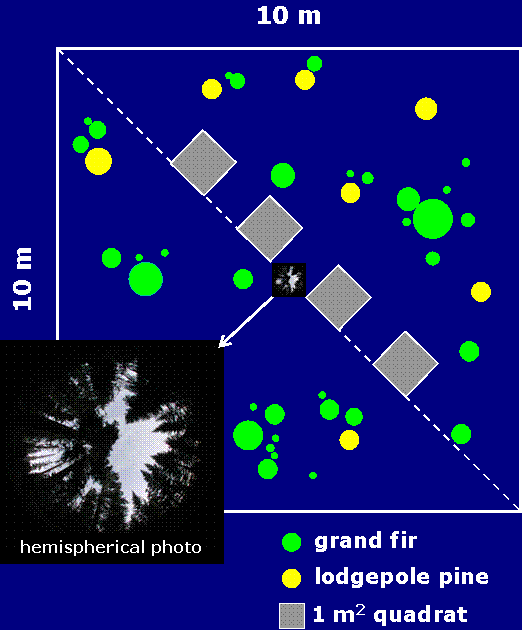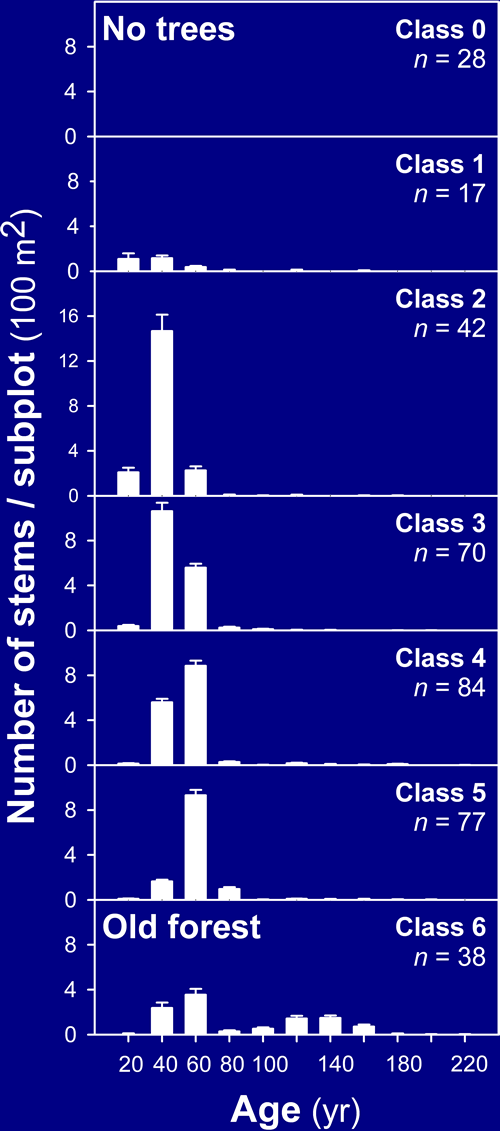| In
this study, we used a chronosequence approach to explore the process
of vegetation change as meadows are replaced by forests. Bunchgrass
Ridge provides an ideal setting for this approach: open meadows
and forests of vary age (young to old) lie in close proximity, sharing
similar topography and soils. We asked the following questions:
- How
do the composition, abundance, and richness of meadow and forest
understory species change during the transition from open meadow
to old forest?
- How
rapidly, and to what extent, are meadow species lost from these
systems?
- How
quickly do forest species colonize and how does composition change
with forest age?
- Which
attributes of forest structure (light availability, tree density,
basal area) exhibit the strongest controls on meadow and forest
species?
Methods
Field
sampling. Sampling
was conducted within the 1-ha plots used to reconstruct tree
invasion history at Bunchgrass Ridge, and in adjacent meadow
openings. We sampled a total of 356, 10 x 10 m subplots.
(See subplot sampling design, below.) Within
each subplot we measured the following:
- forest
structure (density and basal area by tree species)
- light
availability (hemispherical photos)
- cover
of all plant species (1m2 quadrats)
Analyses.
We
grouped subplots into seven encroachment classes by similarity in
age structure, using an agglomerative, hierarchical classification.
(See box, right)
Plant
species were classified into two groups, based on habitat affinity
(see Plant
species list):
- meadow
species (n = 43)
- forest
understory species (n = 48)
For each
group of species, we calculated total cover and richness of each of
the seven encroachment classes.
| Subplot
sampling design |
 |
|
| Encroachment
classes |
 |
|
![]()
![]()
![]()
![]()


